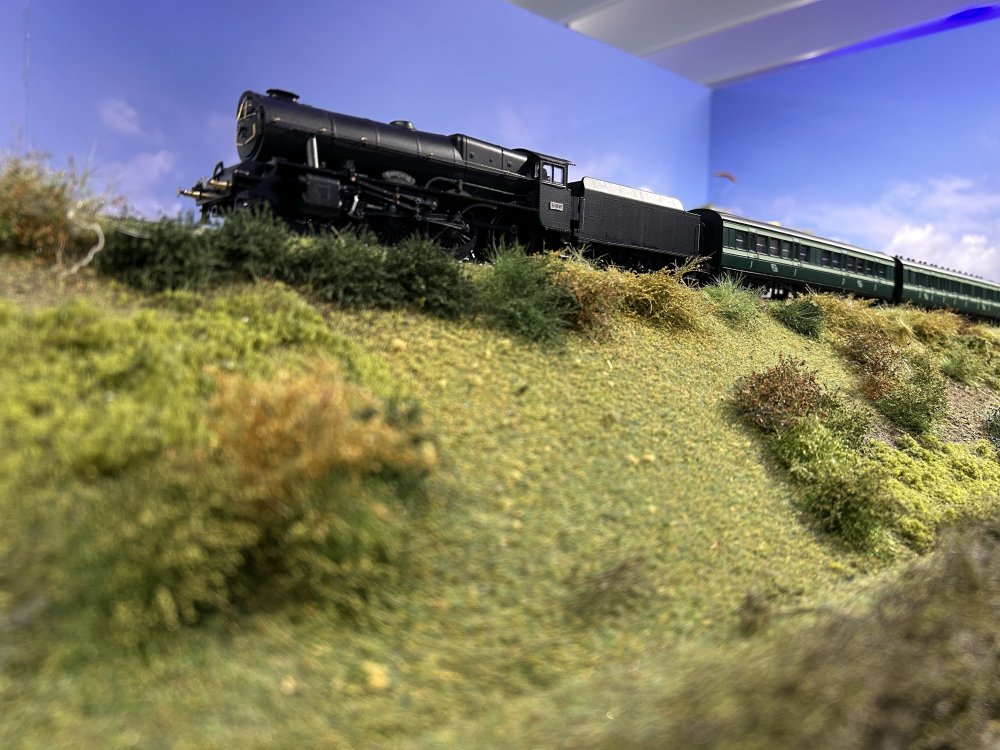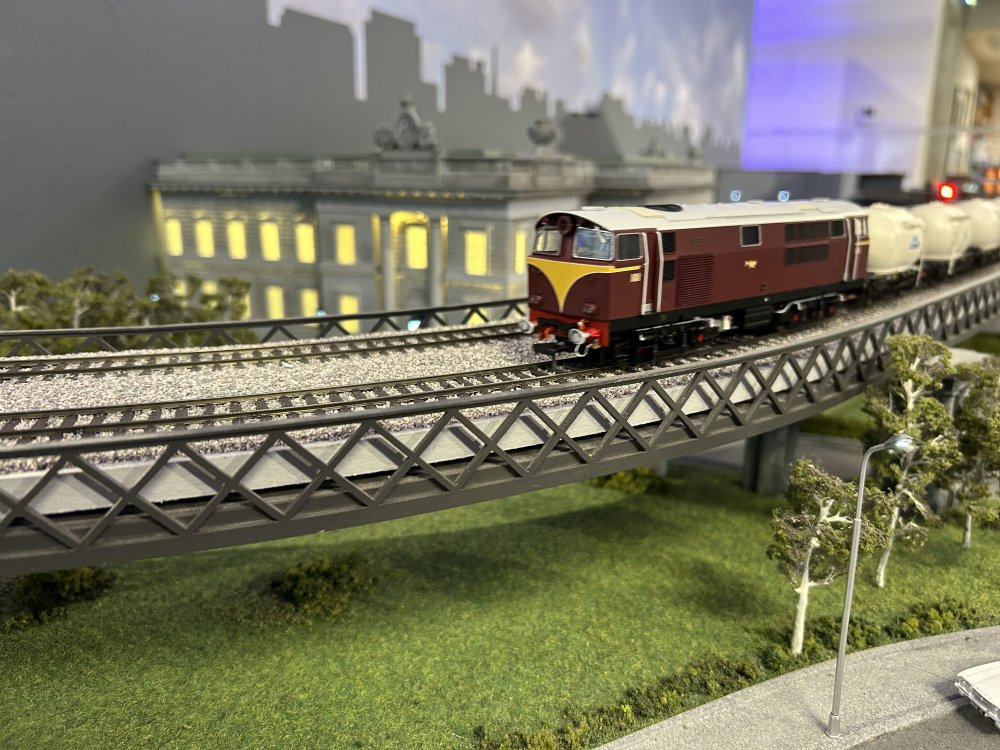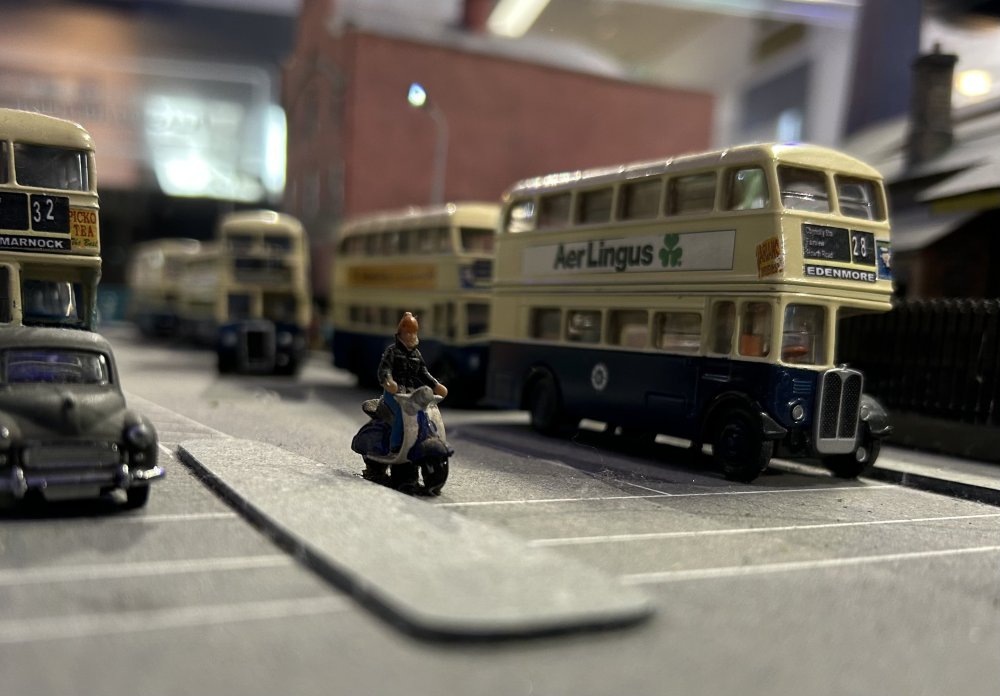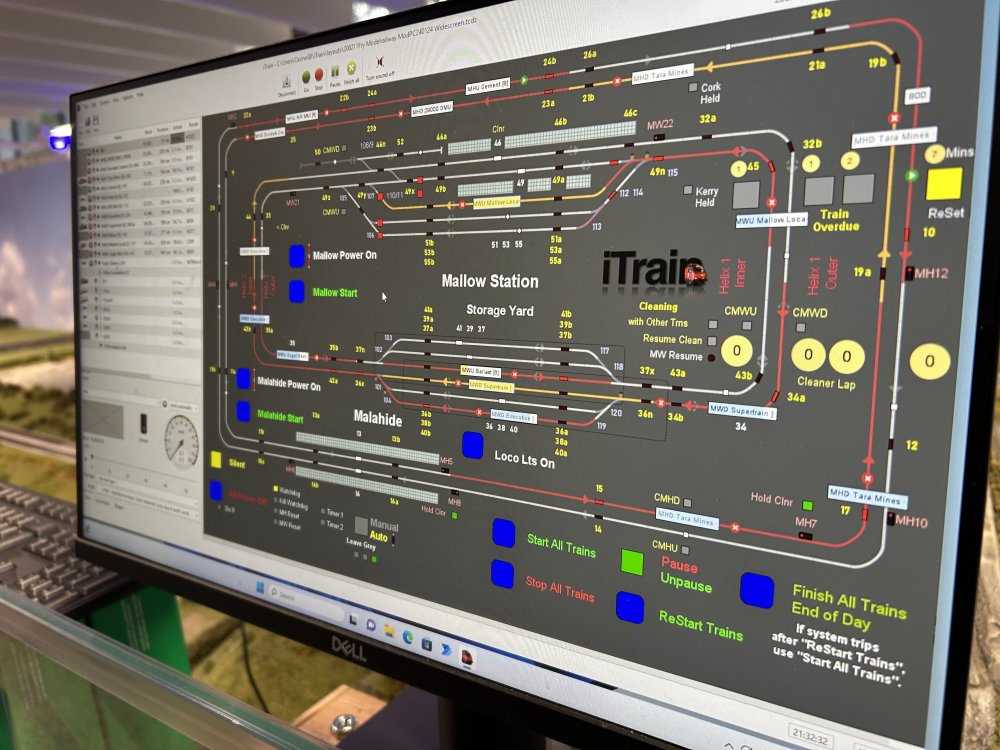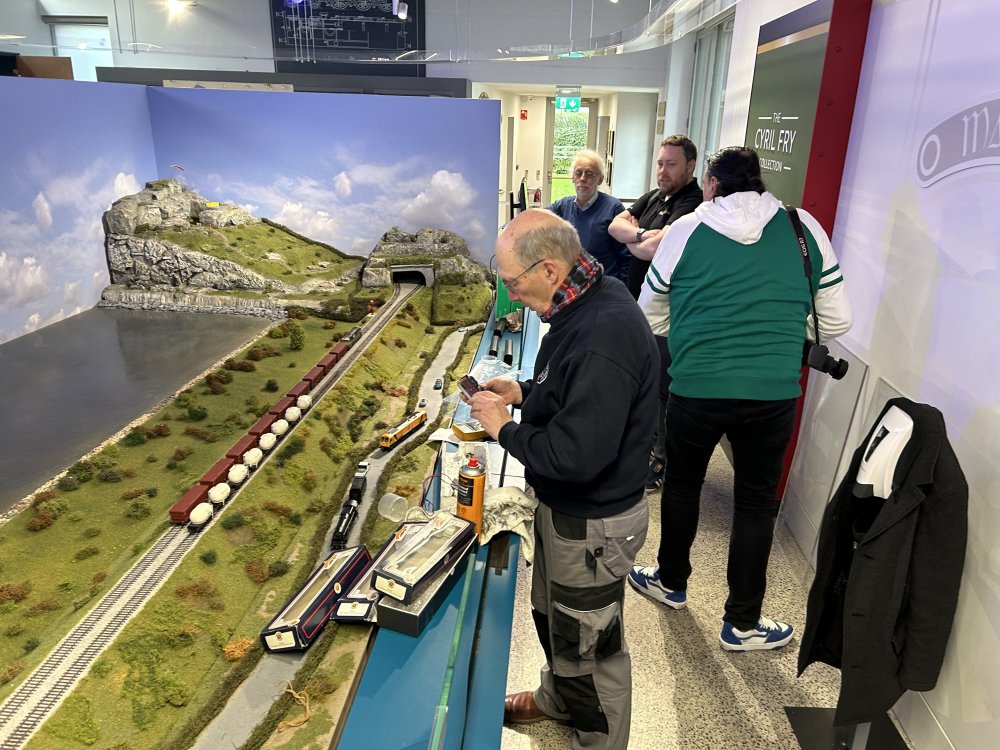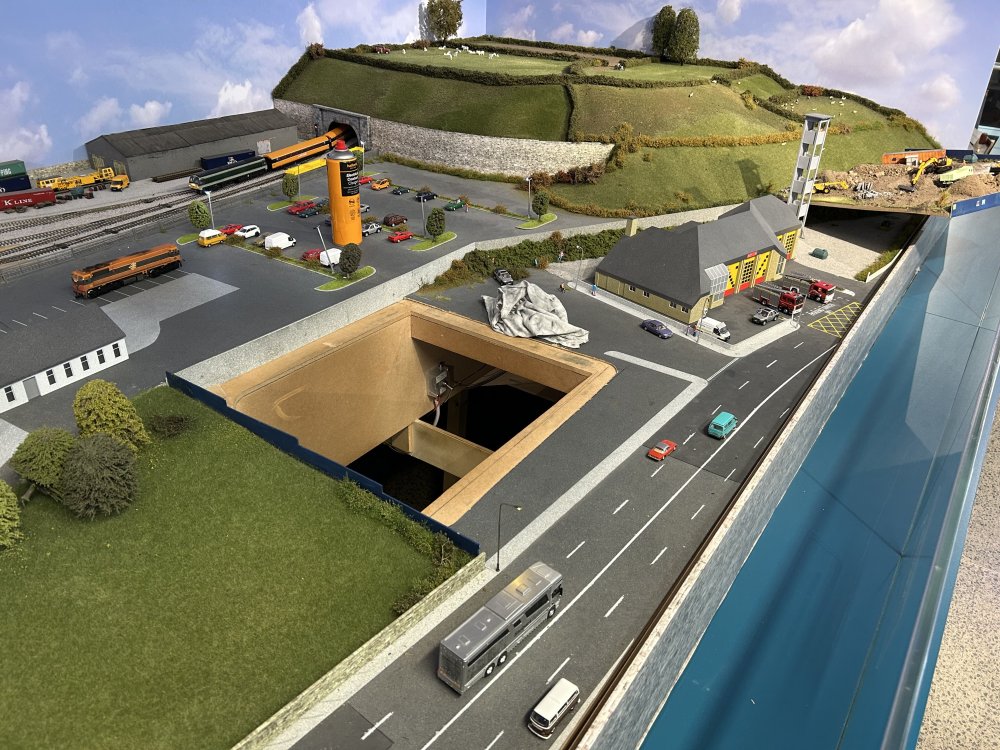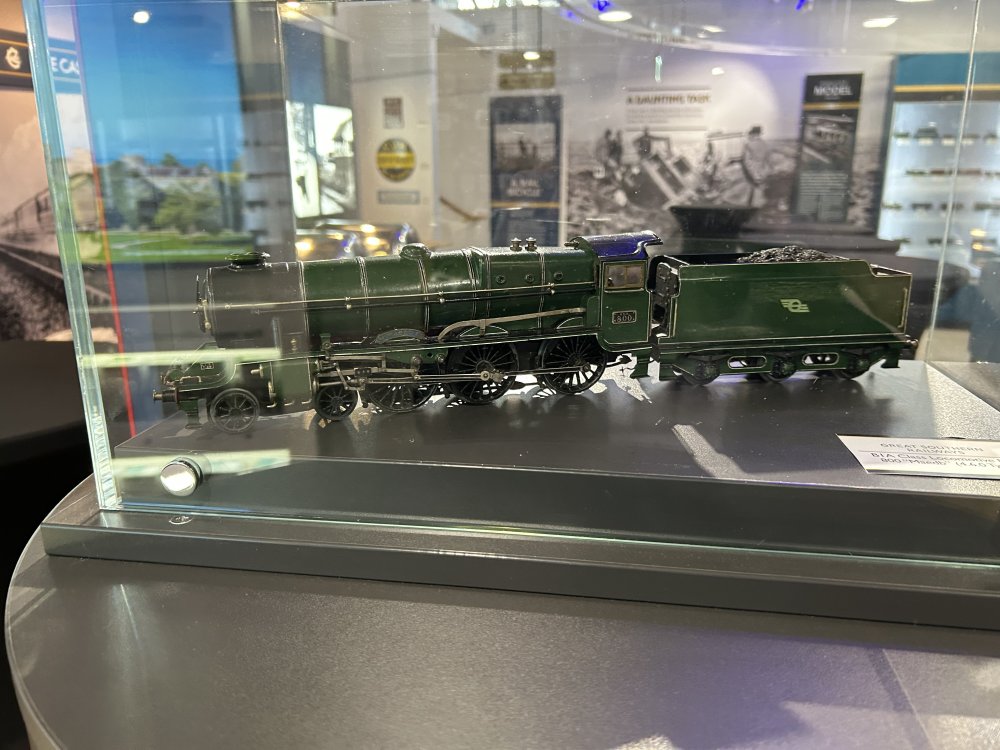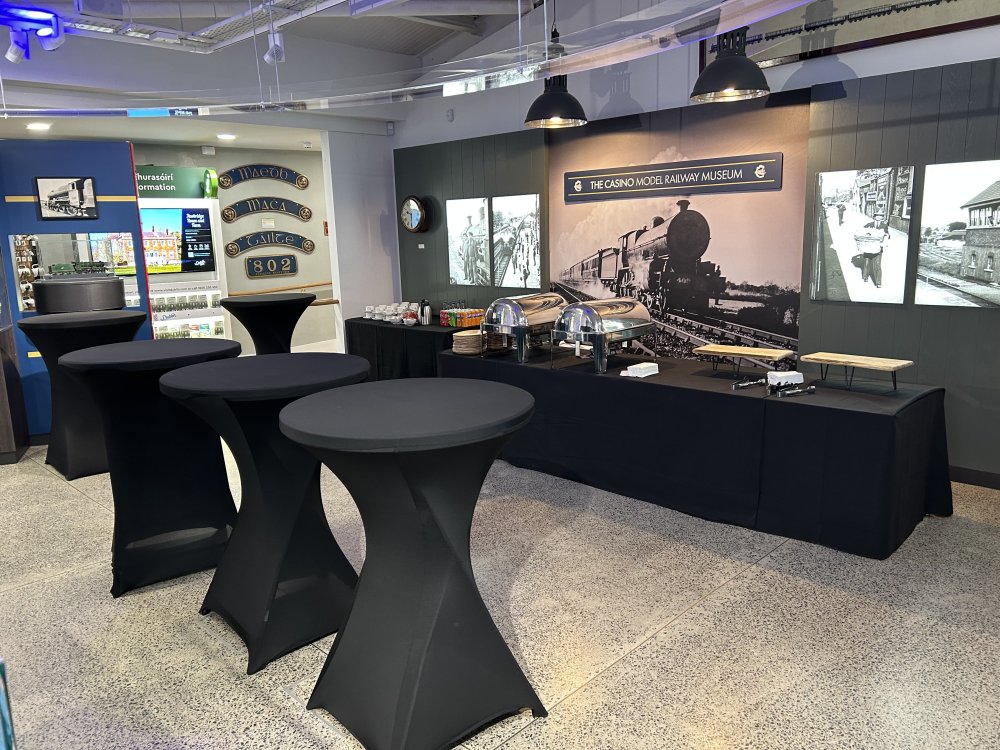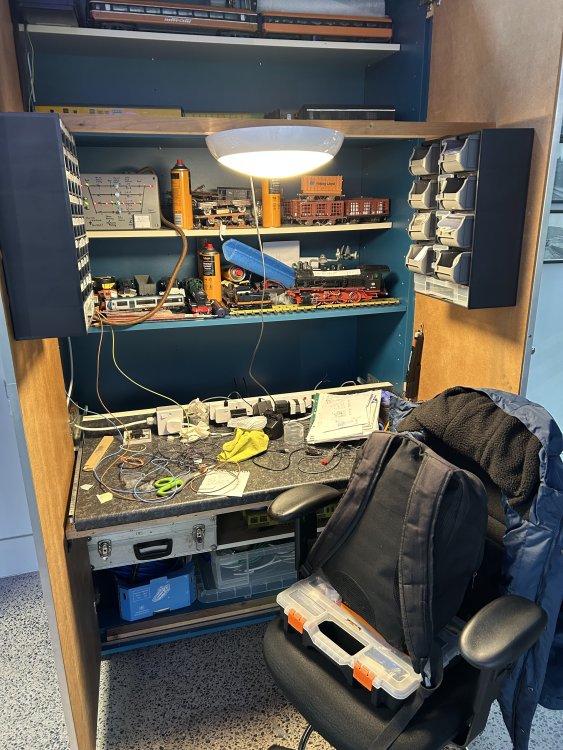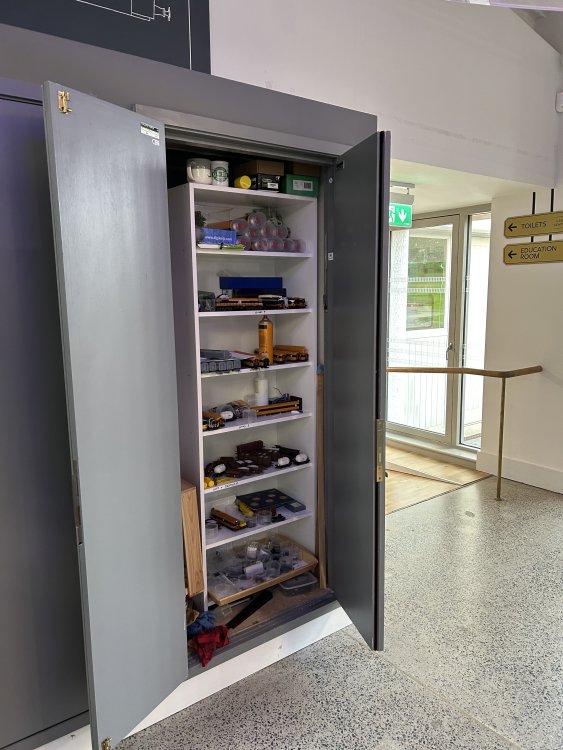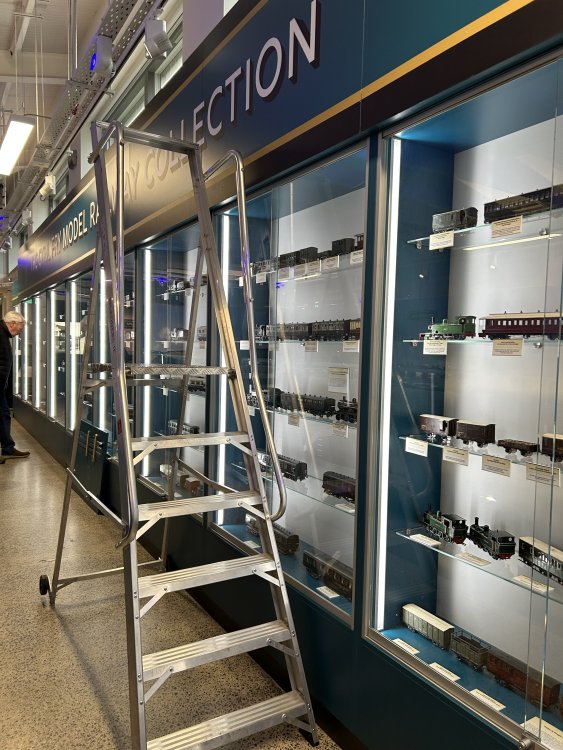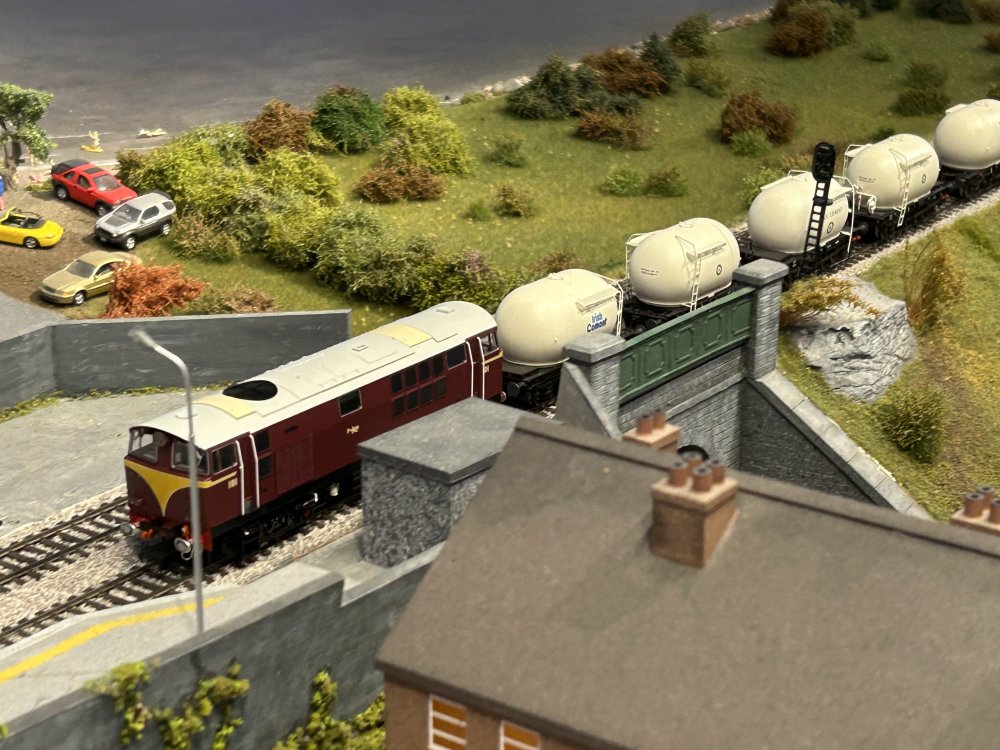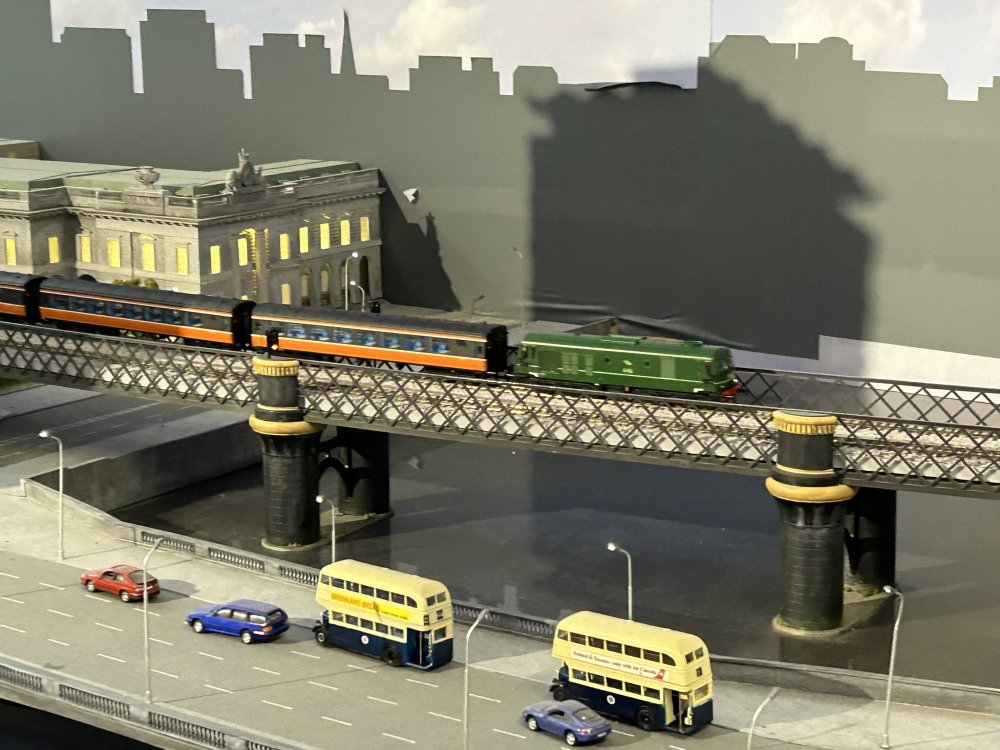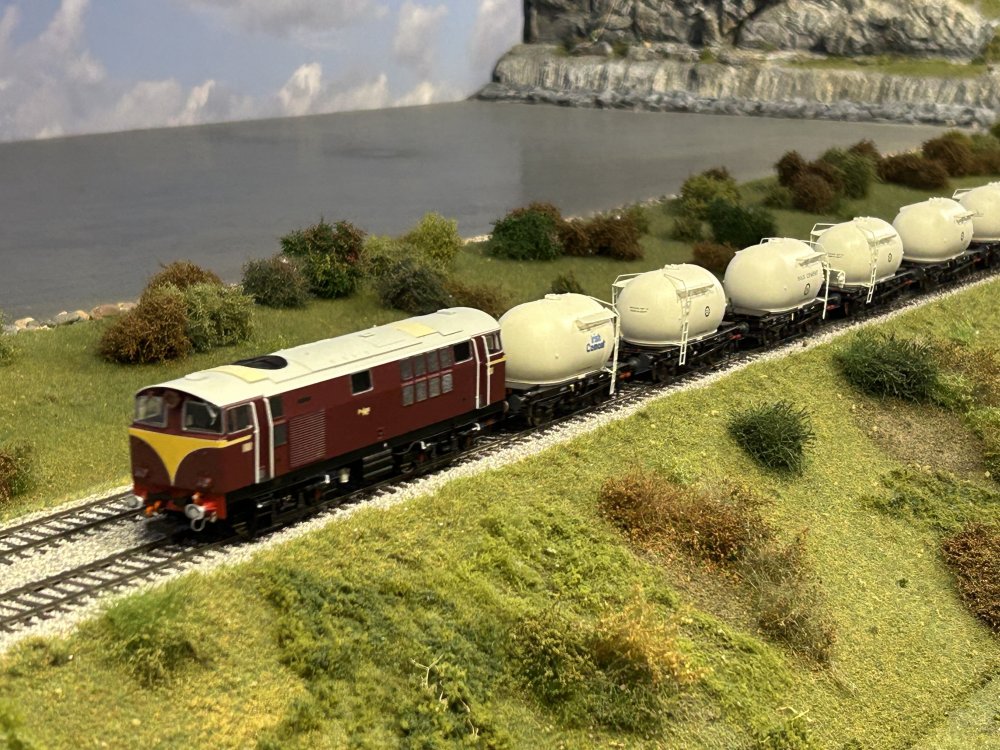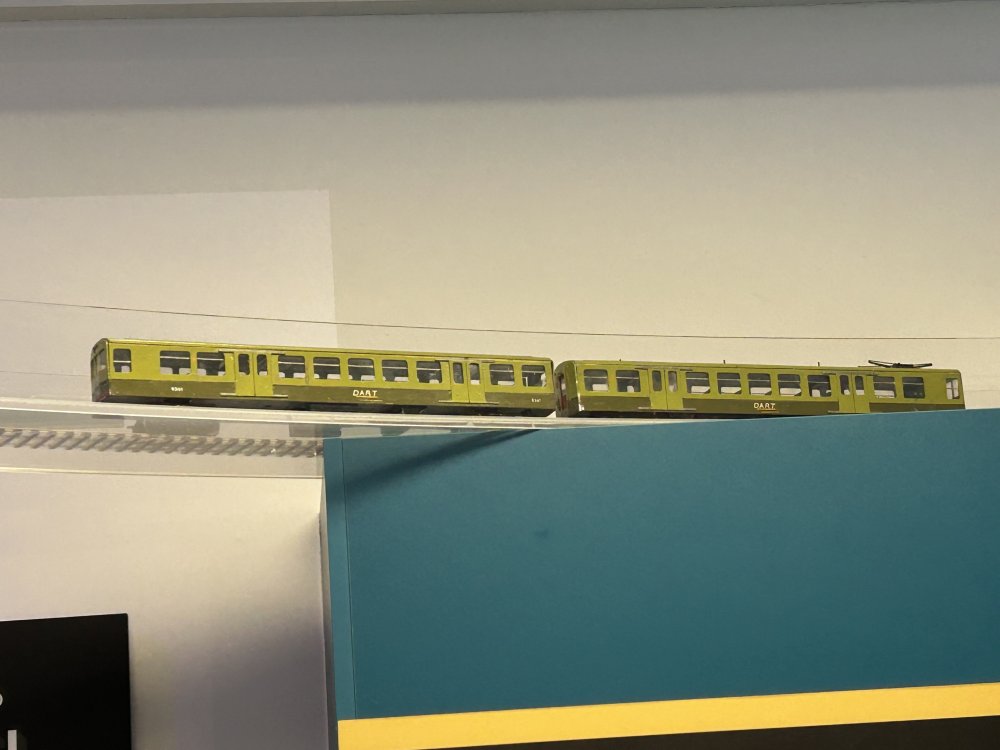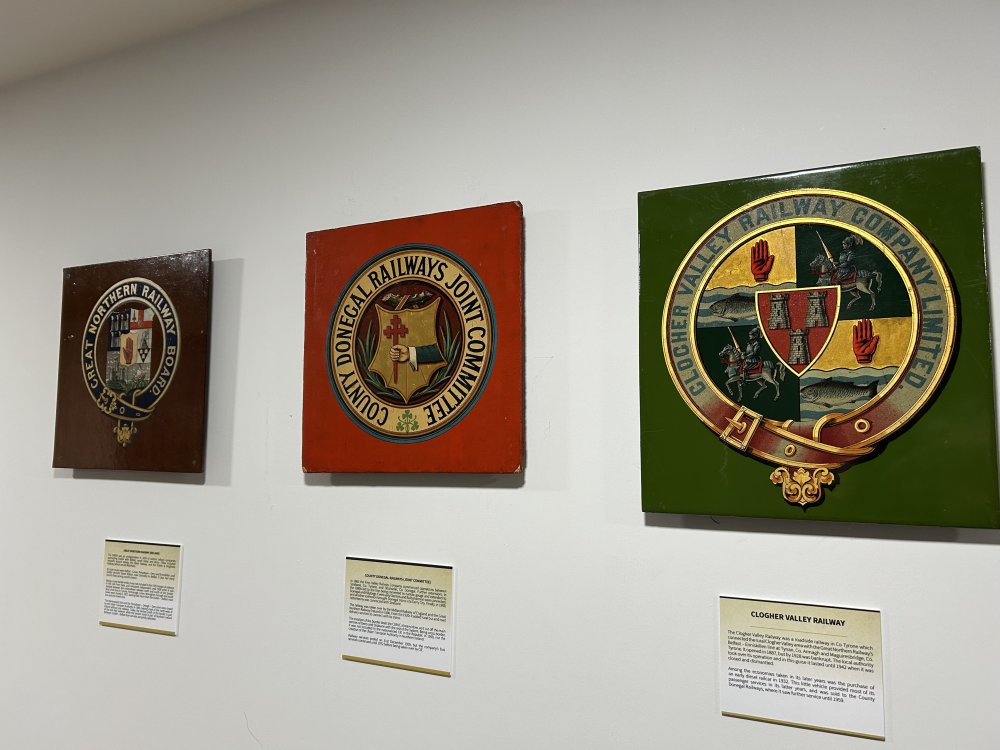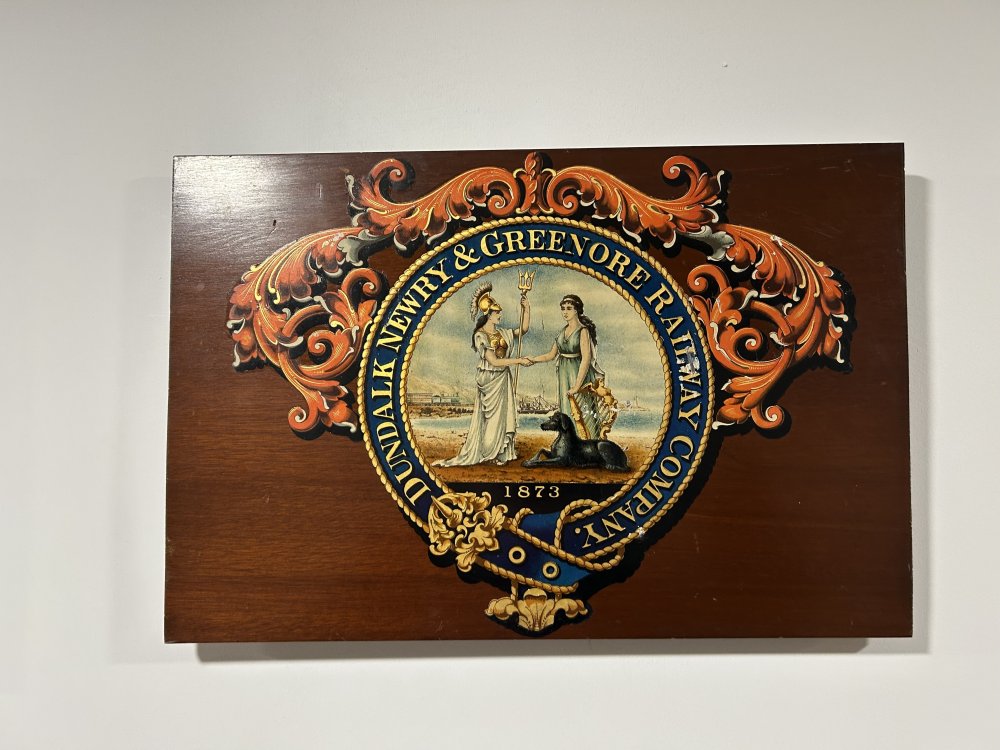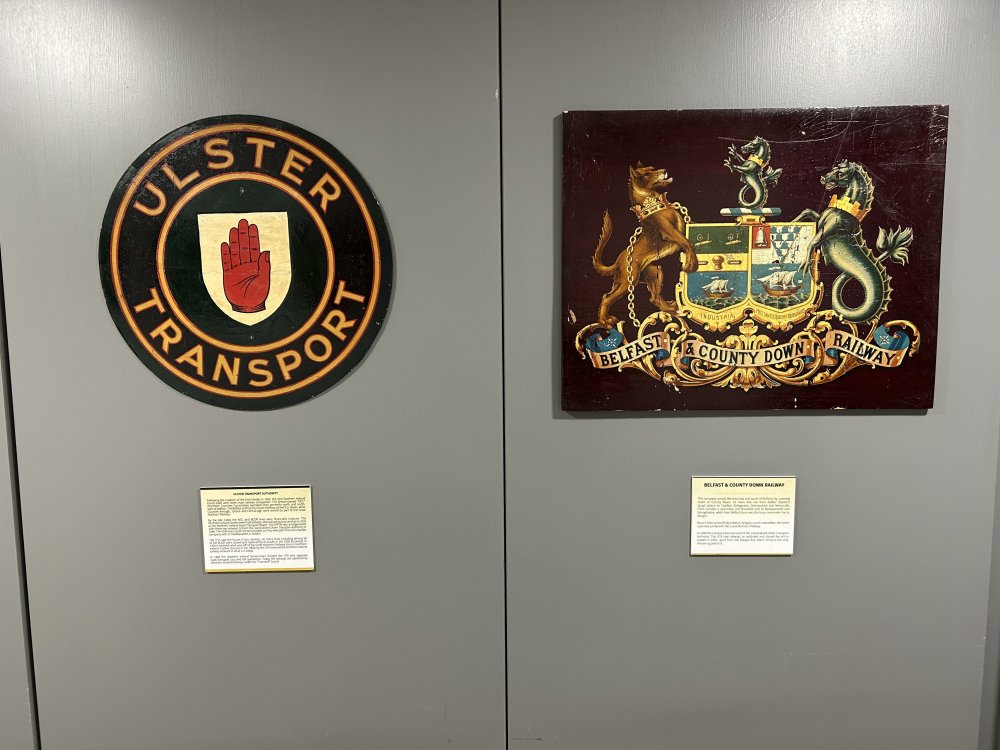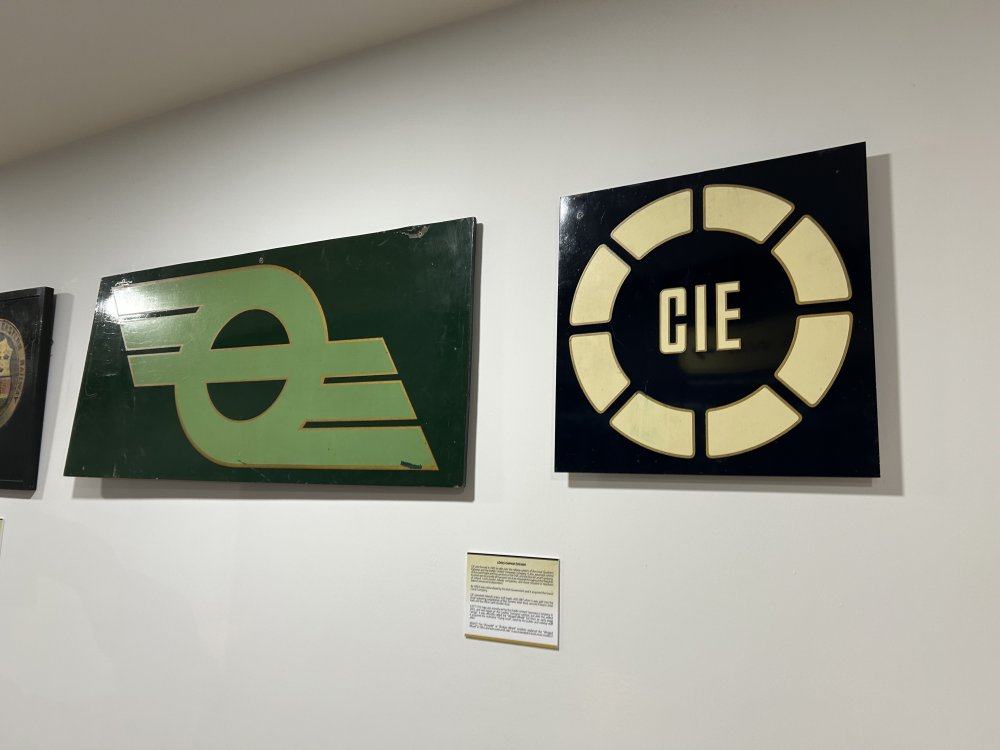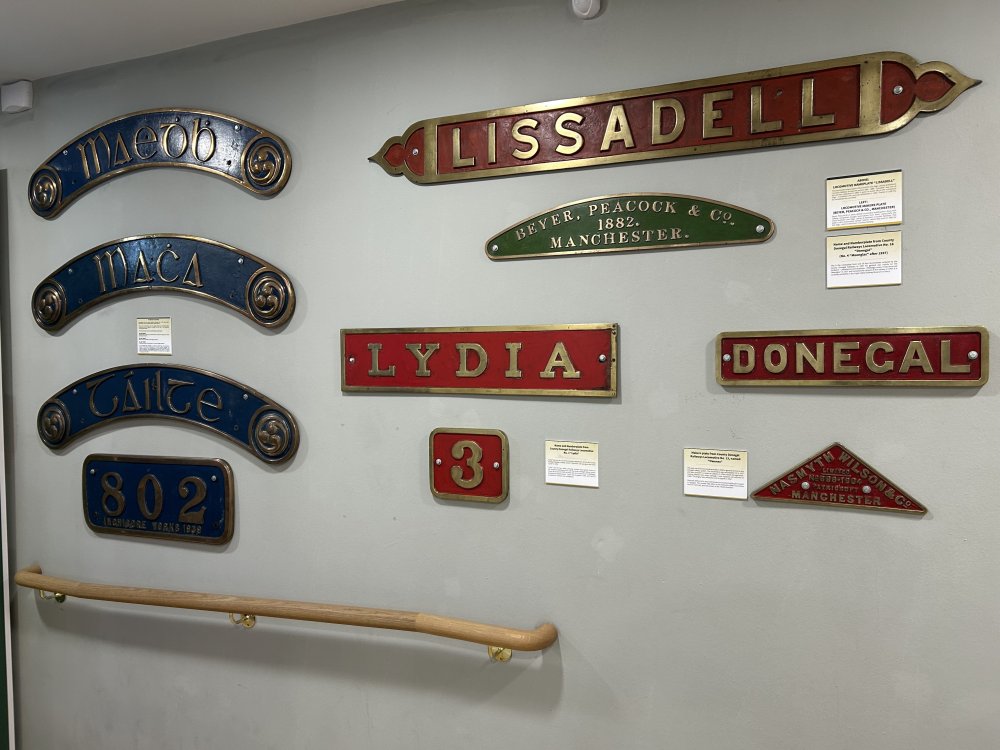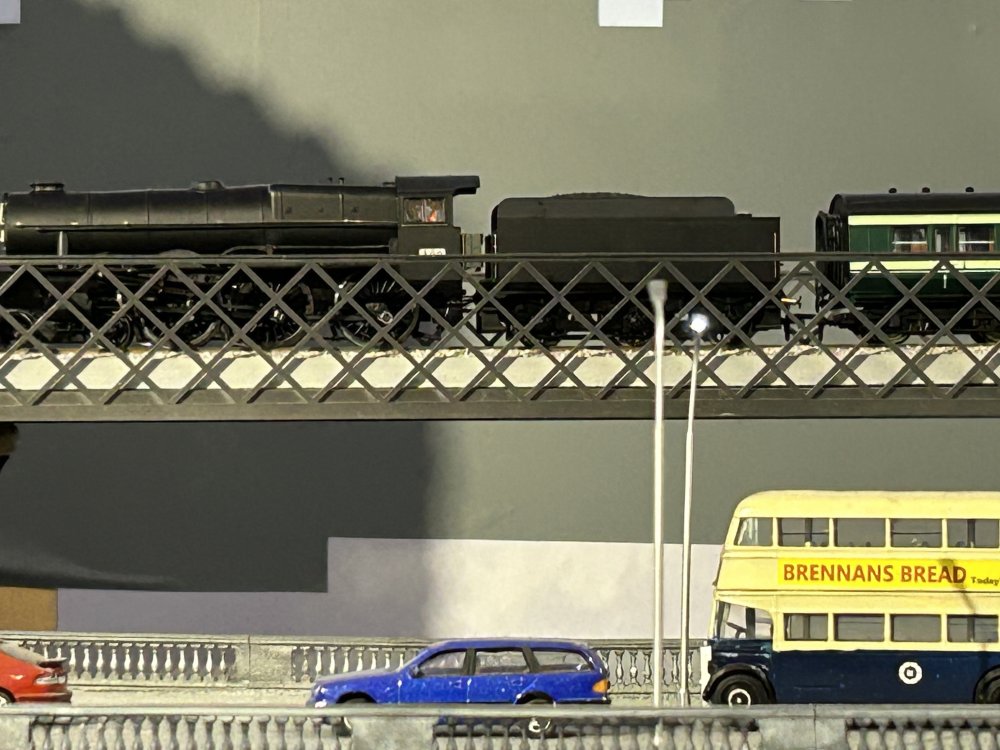-
Posts
15,408 -
Joined
-
Last visited
-
Days Won
374
Content Type
Profiles
Forums
Resource Library
Events
Gallery
Blogs
Store
Community Map
Everything posted by jhb171achill
-
The big issue here is going to be financial viability, and timetable paths in the new Belfast station (though using Central instead would solve the latter). From time immemorial, certainly for the last thirty years, the money has been made on the Dublin-based trips, as (a) they serve a much larger market, and (b) the northern market has never supported the typical prices for a day our that would be realistically achieved in Britain or Dublin. Even in my time as Treasurer (1988-2000, with some wsubsequent years on the finance committee), most northern-based trips barely broke even. There was a pattern, for example, in years with three "Portrush Flyers" when the forst one typically ran at a significant loss; the second broke even, and the third made a surplus which cancelled out the loss on the first. Latterly, Santas were as good money spinner in the Belfast area as well as Dublin, but nothing else was. I never remember a Derry trip that did anything more than just about cover costs. Several made substantial losses. I remember attending a committee meeting one night. I delivered the previous months' financial results and the conversation went like this. Me: "The Derry trip ran at a loss of £1400" (a lot of money to the RPSI thirty years ago). "We can't operate trips like that unless either the numbers and the fares go well up, or something can be done to slash the costs". Operations Officer of the day: "That would mean we'd never operate a train to Derry ever again, if you take that view!" Me: "Exactly". .....Silence. Ops Off: "Yes, but you can't just write off Derry for steam trains" Me: "ANY trip which consistently shows an inability to be commercially viable MUST stop - and, if necessary, we never go near that place again. Doesn't matter if it's the Portrush Flyer* or the May Tour**" Ops Off: "Yeah, but that's ridiculous" At this meeting, the Society's locomotive officer was sitting to my right, and the carriage officer was sitting opposite me. I turned to each in turn and said, "OK - if we decide to operate loss-making steam train trips, do I chop the £1400 off the locomotive budget (the loco officer had just asked for a further £14k for a job on No. 4) or do I cut the carriage budget?" .....Silence. A planned second Derry trip that season did not run. Such, in preservation, are the realities. All too often, the preservation world is heavily populated by folks who, while (of course) very well-meaning and selflessly generous with their time, allow their hearts to rule their heads, preventing cold, hard practicality from gaining oxygen within their thoughts.... (* The Portrush Flyer was, at that time, considered an inviolable sacred cow by the Belfast Area Operations Committee. ** In pre-Santa days, the May Tour was the cash cow which literally was resonsible for the RPSI's survival, full stop). ............................ So what's this got to do with the thread? Simply this. There are three possibilities for future operations in NI on the main line. 1. Back to the way it was. Use NIR men at previous rates. While there's a complex background, suffice to say that this ship has almost certainly sailed, thus as far as I am aware may be reasonable to rule out. 2. Use IE men. 3. Use folks brought over from Britain. It is understood that there appear to be no NIR men interested in being available, certainly not on the availability levels of the late, great Noel. So scrub that. In (2) and (3), very considerable extra expense will be involved, especially in (3), in bringing non-NIR people on board. Thus, while technically possible, and probably more so than (1), the crew costs would certainly make any operation in the north a very heavy loss maker. Therefore, the Society would end up subsidising it - and with what? Money earned on other, more financially viable tours, which would otherwise have been spent on keeping steam locos operational. Clearly - IF this turned out to be the case, utterly irresponsible financially. There may be one fourth option. That would be recruiting several RPSI folks based in the NIR area, and training them up as professional steam drivers. I will not comment on this as I am unaware of whether it's been considered, and if it has, whether it has been found to be feasible. Maybe it is, maybe not - I've no idea; but it's there at least hypothetically. And if it DID happen, in order for the trip to break even, their volunteering generosity might be a necessary factor! Overall, a huge challenge, it would seem, for the RPSI in the future. As a separate but related issue, all over the railway it is getting busier, despite the virtual elimination of goods traffic across the system. This in itself will cause increasing overall pathing issues, especially into and out of Dublin and Belfast. We may but live in hope.
-
Could have been.... the BCDR used the same sort of shade too for a while. So, English LMS-area folks would have visited here and found the entire NCC, BCDR & GSR carrying the same maroon; in the case of the NCC & GSR same lining style too! Yes - there are two. I suggest contacting him, as i also can't get into his website, yet i was in it the other day. Must be a temporary glitch. Just got into it. Only the van - he must have sold out of the others. But that van is as good as a must for a Cork mails train, right up to the 1970s!
-
Indeed. The post-1933 GSR livery, well established by the time the 800s saw the light of day, was actually pretty much exactly the same as the LMS. So, just rub off the LMS crest, and add a GSR one (Studio Scale models supply them), and slightly larger class numerals on doors, paint coach ends black instead of maroon, make the roofs a slightly darker grey, and away ye go! Put a Hattons Genesis six-wheel full brake in maroon (they sell LMS liveried ones - dunno if they still have them) at the back. SSM also do Bredin kits.
-
The thing about rolling stock for the 800 class is this. There was no single uniform train of nice sleek new Bredins to go with them. The Bredin stock was introduced before the 800s were, and examples of these were already running, mixed in with other older types, behind 400s, 500s and Woolwiches, and various 4.4.0s, and had been for a few years. Add to that the fact that no brand new dining cars or mail vans were built to "match", so the typical heavy mail trains that the 800s were set to work on, would from day one have had quite an eclectic - and necessity-driven - array of stuff behind it. 1. Dining cars were usually old 1900-1910 GSWR ones. 2. Mail vans ditto - but also older ones than that, and both bogie and six-wheeled. 3. Passenger brakes - there were some "Bredin" ones - full bogies. See the Studio Scale Models kit of a full bogie mail brake. The Hattons Genesis full six-wheel passenger brake is suitable too, but if you want it to be in GSR era, buy one in LMS maroon and alter the lettering. In CIE green, better the darker version - by the time the lighter green livery started, 800s were rarely used. 4. Thirds and compostites - NOW we're on to the Bredins; see the SSM kits again. 5. Thirds and composites - also there would have been older, mostly ex-GSWR side corridor types. 6. Firsts - there were Bredin ones - SSM again - but also many older wooden bodied ones like the RPSI's preserved no. 1142, but no suitable model exists to convert one of these from. Cheaper option - get LMS coaches in LMS livery, paint the silver or light grey roofs a slightly darker grey and doctor the lettering on them to be more GSR than LMS! In summary, there's little on the market RIGHT now that is suitable, but who can tell what the future holds!
-
I recall speaking with a (long defunct) small manufacturer almost forty years ago who was keen to do easy-to-make plastic kits of Irish narrow gauge to run on 12mm track. He was considering offering a Donegal class 5, which would have been amazing. Sadly, then as now, he did the sums and walked away…..!
-
Yes - for some reason, few MGWR bogies made it into the black'n'tan era - there were a very few, but most timber-bodied coaches still in use after about 1964/5 were ex-GSWR, and of both low and high roofs, and both corridor and non-corridor. The very last coaches still in green appear to have been up to 1967, judging by both personal memories and pictures I've seen. A solitary GNR coach was still in traffic in brown as late as 1967.
-
Silver, green and black’n’tan all present there!
-
Yes, you have. main line Cork trains at that time were an absolute mixture of just about anything. Look at just about any picture of an 800 - or, for that matter, a 400, a Woolwich or anything else - on the Cork line and you'll be hard put to find any image which shows a train with more than one vehicle of the exact same type. Certainly, a uniform rake of identical carriages, like nowadays as standard, on ANY line in Ireland much before 1970 was rare to never.
-
Strictly speaking, if it's in the no-snail or Cultra livery, it will only be (a) sittinmg in a siding in Thurles, or (b) sitting in a museum! While in traffic, all three had snails in CIE times. As to the "dark" green, all CIE steam locosmotives which were painted green always had the dark version. So did buses, so did lorries. The post-1955 lighter shade was ONLY applied to coaching stock, railcars and diesel locomotives. And a note on that - when the railcars were introduced, dark green was the livery, so any future AEC model would need to have a dark green option plus a light green option. G601, E401, B101, A & C class diesels, and many carriages and tin vans, were silver when new, but by 1957 were being repainted the lighter green. Since CIE only inherited the rump end of the GNR in late 1958, all CIE repaints of GNR carriages were the lighter green, never the darker. Many actually weren'ty repainted until after black'n'tan came in. Now; all good rules have good exceptions. While the above is the general rule, in the early 1950s - before the light green livery appeared at all - 802 was repainted in a lighter shade, evidently not unlike the light shade introduced after 1955. A new batch of coaches of the 1951-3 style (CIE's versions of "Bredins", basically) also appeared in this livery, and unlined. It was not deemed to be successful and repaints into standard gark green of the day followed pretty quickly. Thus, in terms of actual running, 800 had two variations (GSR green, CIE green). 801 had two at least, plus a possible third. While she carried the same two liveries, at some stage her number and nameplates received a red background instead of blue. I do not know whether the red appeared before or after, or at the same time as, the livery change. 802 had original GSR livery, then the experimental colour with red plates, then standard CIE green with red plates. Tender markings on all three always had either the GSR crest or the CIE symbol.
-
Possibly 3D is the way forward here. I had discussed a 3D body for a standard GSWR main line corridor composite a while back, with one of our 3D experts here - must re-visit that. A compo would work well, as older main line coaches of this type were widely used also on branchlines in the CIE period. Ballaghaderreen, Kenmare and Loughrea all had lengthy periods in the 1950s where the traditional short rake of 1890s six-wheelers was replaced by a "modern" 19209s ex-GSWR composite and a tin van or six-wheeled passenger brake. So, of all the older "southern" carriage types, a vehicle of this type would appear to have a wider range of applications. The 8-compartment type shown above by Mayner, either in corridor or non-corridor versions, was to be seen well into black'n'tan days on the two spare Dublin sets of wooden stock which just aboiut lasted into the 1970s, on Youghal excursions up to about that time, and occasiobally also on Cobh suburban traffic mixed in with Park Royals. The last time I personally saw anything like that in traffic was, I think, in 1970.
-
IMG_1224.mov A few random observations this evening, as everything was getting set up within the museum…. IMG_1223.mov IMG_1213.mov IMG_1211.mov
- 234 replies
-
- 12
-

-

-
Yellow and black in the GSRs unique 800 class livery. Black and white in CIE times, not cream. Same as all of the other (minority of) CIE logos which became green. And yes, any yellowy appearance in photos is a result of deterioration of the photo. The lining was pure white, and any discolouration in traffic was extremely slight. Remember, too, the lining currently on Maedb has been on it some 65 years, much longer than between repaints in traffic.
-
Bantry (on the correct side of the Irish Sea)
jhb171achill replied to meathdane's topic in Irish Model Layouts
Yes, but I believe a connection came into Bantry on at least some occasions. I’ll actually look up a WTT! -
Bantry (on the correct side of the Irish Sea)
jhb171achill replied to meathdane's topic in Irish Model Layouts
In diesel days Bantry had two passenger trains a day each way - the same set, which was based there and did two return trips to Cork each day. In addition, two goods trains, earlier in the morning. Other West Cork lines were mostly serviced by mixed trains. An easy one operationally for a shunting layout. 1. Goods arrives, shunts. 2. Passenger departs to Cork 3. Second goods arrives, shunts. 4. First goods departs. 5. 2nd goods departs. 6. Passenger arrives 7. Passenger departs again 8. Passenger arrives, day finished! -
That’s exactly why I like this era for modelling. Literally nine decades can be seen in traffic in a single photo. At least one old six-wheel postal van, built in 1877, saw in the 1960s, while you could get a two month old carriage and a seventy year old one in the same train, hauled either by a brand new C or an 80-year-old J15….. And everything in between. And the youth of today think that Cork’s 26s are old!
-
I defer to your greater knowledge, Mr. Provincial; of whose wares I am an extremely contented customer! This very day I found five of your kits, unmade-up, which had become mired within the disorganised primeval soup which outsiders see as my “study”! That's this coming week occupied….
-
Limerick to Foynes railway reopening plan
jhb171achill replied to spudfan's topic in What's happening on the network?
Precisely. So, the takeaway has to be that thus far, at any rate, there appears to be precisely zero case for anything in this line, unless the new ore body / on which there is complete radio silence- appears….. -
Mighty stuff indeed! He's got the "real" GN blue - even Cyril Fry wasn't able to manage that!
-
I think etched overlays are a very good option, and certainly a great deal easier than scratchbuilding. Repaints (and I've a few) can indeed look convincing enough, especially with footboards added. (GSWR platforms were traditionally much lower, as were some on the DWWR). And yes, mix and match with Park Royals and Genesis 6-wheelers, especially the full brake vans, and a tin van or two as well; and among wooden stock both heights of roofs. On my layout, I have prototypically no more than one or two of any type of coach, so all trains are a mix of whatever's about!
-
Goods vans and cattle trucks made up the vast, overwhelming majority of goods stock on all lines on this island. there were no massive opencast coal mines to have hourly merry-go-round trains leaving from, no huge iron ore mines, no huge petroleum transport by rail, not even the milk tankers of Devon stuck onto avery goods train. So goods vans and more. Leslie offered two variants of GNR goods vans, but these were more than similar to some GSWR and MGWR types. Like carriages and wagons, repainted British types just don't begin to cut it, especially with the dreaded grey or white roofs and black underframes. With the "H" vans now established, both by IRM and Provincial, and cattle trucks from the latter too, those two types re well covered. Once the CIE "H"s were being churned out of Inchicore, pre-CIE types disappeared rapidly. I've seen a picture of a MGWR cattle van somewhere in the early 60s, but these by then would have been very rare indeed. If there's one thing missing currently, it's the "soft-top" (convertible van), which looked like any other goods van except that it had a central part of the roof open and covered with a tarpaulin. With the tarp on, it was a goods van. With it off (for ventilation) it could be used for cattle. As for open wagons, they are the one thing where many British prototypes CAN be used. The British ones and our ones (main companies; not all!) were all standard types of designs. The West Cork system were non-standard (as with most things!), but above all the BCDR and NCC wagons were very different indeed, and require scratchbuilding. DSER ones were their own design too. But for CIE, a repainted LMS four wheeled open will suffice as a MGWR, GSWR, GNR GSR or early CIE design. As for majority, the GSWR was of course the largest constituent company in the GSR and later CIE, therefore vehicles from that stable - be they coaches, wagons or locos - were more numerous than others. I saw a GSWR open in North Wall in the 1970s, by then with a CIE roundel on it.
-
The IRRS publish one. I think it's also available to non-members, and might be available from one of their stands at a show. The "go-to" man is Richard McLachlan, a good colleage of Leslie of Provincial Wagons. The sort of things you're looking at are the likes of the RPSI's 1142, and Downpatrick's 836. While the former is locked up in Inchicore, the latter is to be seen in the DCDR museum. In each, you've an example of both the high-roofed and low-roofed profiles. At Downpatrick also, there is a GSWR six-wheeler under restoration. In its restored guise, it's actuall been rebuilt as a brake saloon forst, though in real life it was a full brake (No. 69) - one of the very last few to survive.
.png.c363cdf5c3fb7955cd92a55eb6dbbae0.png)




